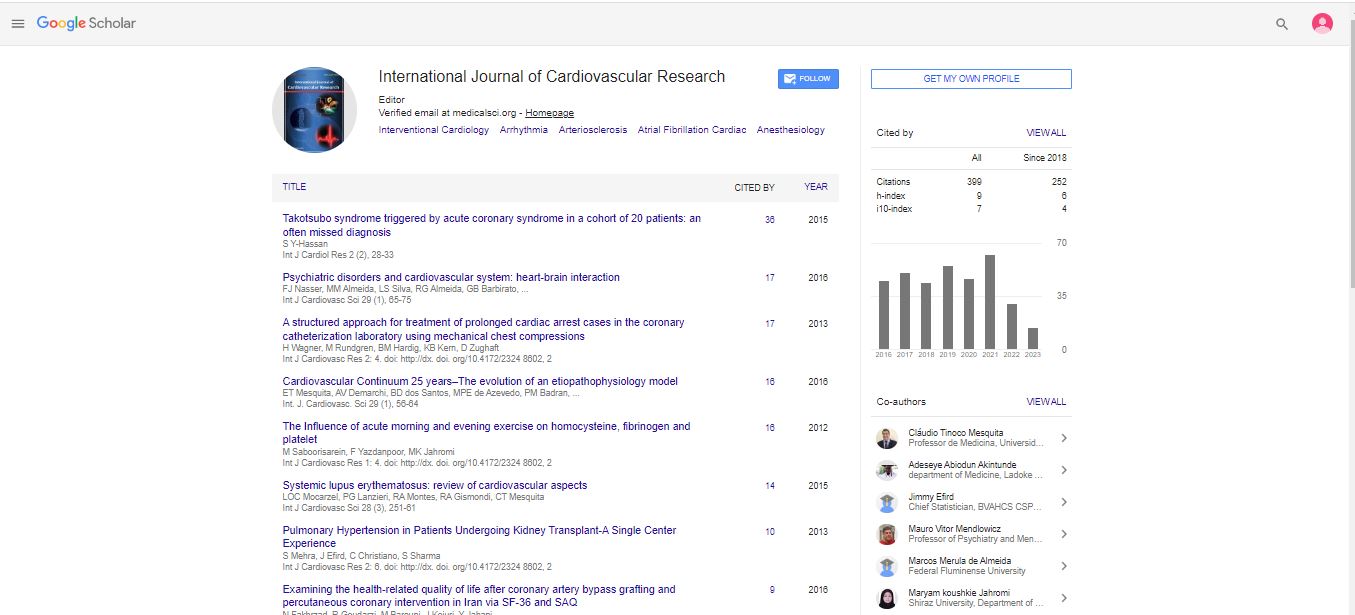Research Article, Int J Cardiovasc Res Vol: 4 Issue: 4
Development and Validation of a Prognostic Index for Early Mortality after Aortic Valve Replacement
| Emiliano Angeloni*, Giovanni Melina, Simone Refice, Antonino Roscitano, Fabio Capuano, Cosimo Comito and Riccardo Sinatra | |
| Department of Cardiac Surgery, Sapienza University of Rome, Policlinico Sant’Andrea, Rome, Italy | |
| Corresponding author : Emiliano Angeloni, MD Sapienza, University of Rome, Department of Cardiac Surgery, Ospedale Sant’Andrea, Via di Grottarossa 1035, 00189 Rome, Italy Tel: +390633775593; Fax: +390633776413 E-mail: emilianoangeloni@gmail.com |
|
| Received: February 20, 2015 Accepted: March 19, 2015 Published: March 21, 2015 | |
| Citation: Angeloni E, Melina G, Refice S, Roscitano A, Capuano F, et al. (2015) Development and Validation of a Prognostic Index for Early Mortality after Aortic Valve Replacement. J Cardiovasc Res 4:4. doi:10.4172/2324-8602.1000220 |
Abstract
Development and Validation of a Prognostic Index for Early Mortality after Aortic Valve Replacement
Background: The availability of new techniques and an aging patient population are the main issues which drive careful patient selection for aortic valve replacement (AVR). The widely used EuroSCORE has been recently reported to be unreliable for aortic valve surgery. In these settings, a simple clinical tool for assessing the surgical risk would enable more accurate decision-making. Methods: Consecutive patients that underwent AVR were reviewed. Variables independently associated with 30-day mortality were tested by means of multivariate logistic regression and a scoreindex was generated. A different series of patients who underwent AVR were used as validation cohort. The predictive power of the model was assessed with Receiver operating characteristic (ROC) curve analysis and Hosmer-Lemeshow analysis. Results: The development cohort consisted of 740 patients (40% female; mean age 71 ± 11years). Thirty-day mortality was 25/740 (3.4%). Among the variables studied, preoperative critical state(p=0.02;OR:2.52), aortic annular diameter <23 mm (p=0.03;OR:2.61) and previous cerebro-vascular accident (p=0.02;OR:4.97) were independently correlated to 30-day mortality and were used to compound a risk model. When applied to the validation cohort our prognostic index resulted in a mean score of 1.08 ± 0.53 in dead and 0.62 ± 0.12 in survivors (p<0.0001). The ROC curve analysis showed an excellent predictive power for this prognostic index (AUC 0.84; p=0.0001), slightly better than logistic EuroSCORE (AUC 0.82). Conclusions: Preoperative critical state, aortic annular diameter and previous cerebro-vascular accident were identified as major risk factors which correlated with early mortality after AVR. A simple and reliable point-score index was developed and showed a predictive power similar to EuroSCORE.




